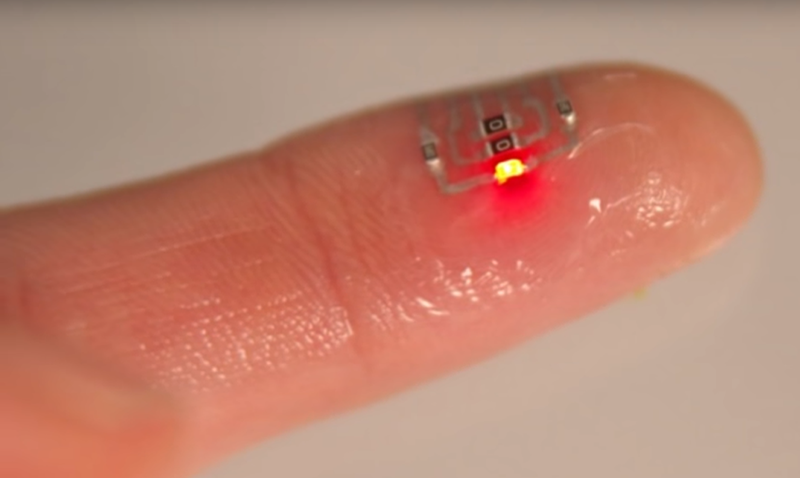Researchers from Carnegie Mellon University and the University of Coimbra of Portugal have developed a new method for creating highly flexible, tattoo-like circuits that could one day power wearable devices.
The process uses a trace of an electrically conductive, liquid metal alloy that is applied to tattoo paper that adheres to human skin. The ultra-thin electronic tattoos can be applied with water, the same way a child’s decorative tattoo is applied with a damp sponge, IEEE Globalspec.
“These are circuits that are printed on temporary tattoo films just like the commercially bought tattoos. The way that we use this tattoo film is we print circuits made of silver nanoparticles, and then what we do is we coat those silver nanoparticles with a liquid metal alloy. And the liquid metal fuses with the silver to create these conductive wires on the tattoo. The tattoo can easily be transferred to skin and the conductivity is high enough to support digital circuit functionality,” said Carmel Majidi, Associate Professor of Mechanical Engineering at Carnegie Mellon.
The circuit remains functional even as it stretches. So, these electronic tattoos could be created to be placed on the body to power any types of devices that you want mounted to your skin. One example could be a touch interface that would augment any kind of wearable electronic, or personal electronic device that you could have. It could also be used to wire up an accelerometer that could track your body motion, said Mr. Majidi.

“This is a breakthrough in the printed electronics area,” said Mahmoud Tavakoli, director of the Soft and Printed Microelectronics Lab at the University of Coimbra. “We showed for the first time that inkjet-printed patterns of silver nanoparticles can be sintered at room temperature using the gallium indium alloy. Removing the need for high temperature sintering makes our technique compatible with thin-film and heat sensitive substrates.”
The process is low cost and includes mechanical properties similar to lightweight fabrics so they can bend, fold, twist and resist strains above 30%, which is the typical stretchability of human skin, researchers said.
Read more Yarn Battery Could Power Smart Clothes and Wearables
“Electronic tattoos like the one we’ve developed could be used for applications in health care. It could be used for physiological monitoring, it could be used for gaming, or pretty much any other application where you would want electronics that either track your motion or can measure your vitals that would be in intimate contact with your skin,” said Majidi.
“Just like any other temporary tattoo, we can easily just wash off when you don’t want to use it anymore, and it’s unobtrusive. You could have it under your clothing, or you could just have it on your skin but not worry about having it impair your natural motion.”












